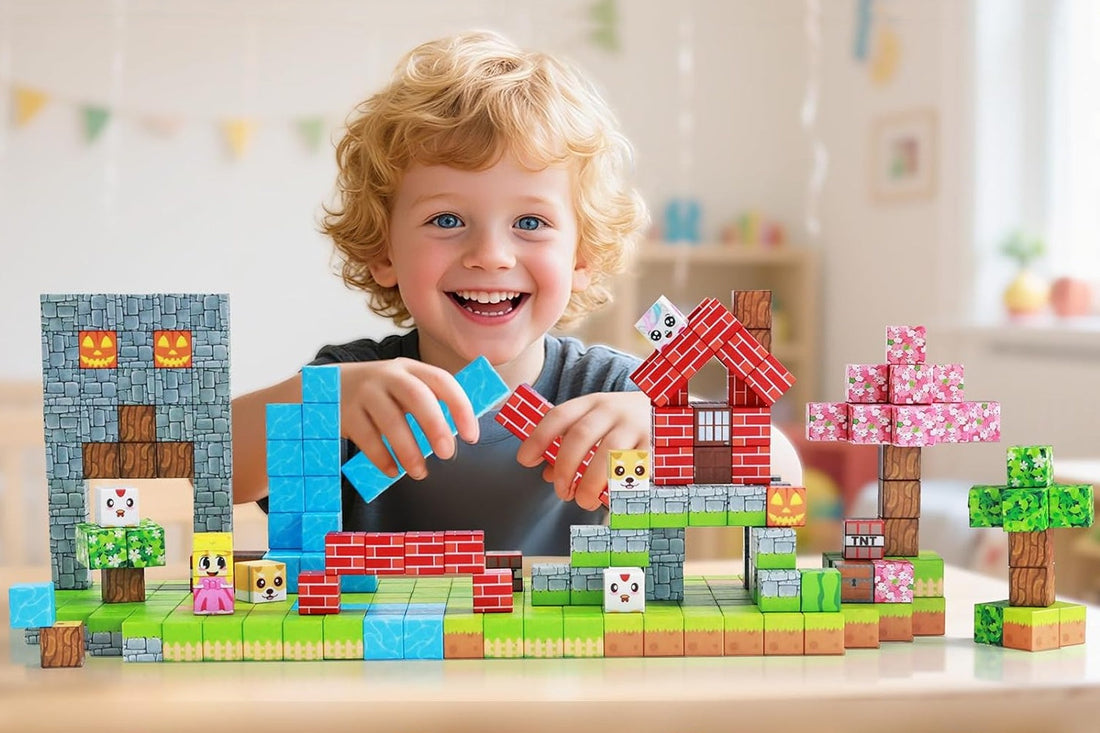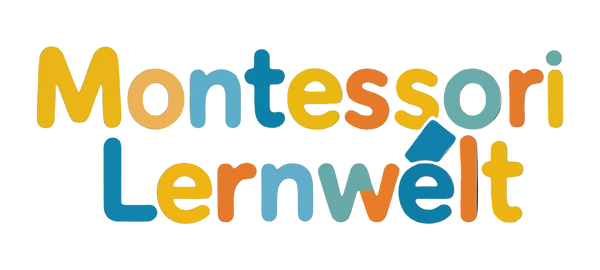
A comprehensive guide: Building blocks – More than just a toy
Share
Few toys are as timeless and universally loved as building blocks. They are the silent companions of childhood, transforming from simple blocks into majestic castles, futuristic spaceships, and complex machines. Yet behind this seemingly simple play lies a profound educational value that perfectly aligns with the principles of Montessori education.
At Montessori Learnworld, we view building blocks not just as play materials, but as fundamental tools for child development. This comprehensive guide dives deep into the world of building blocks, comparing their features, highlighting their educational benefits, and showing you how to choose the perfect set for your child.
The world of building blocks: A detailed overview
Building blocks are not just building blocks. Each material and design appeals to different senses and promotes specific skills. The choice of the right building block depends heavily on the age and individual interests of your child.
1. Classic wooden building blocks
They are the epitome of simple, open play. Without fixed connection points, the focus is on balance, gravity, and patience. Their warm feel and natural smell make them a sensory experience.
- Features: Made from sustainable wood, simple geometric shapes, durable and timeless.
- Advantages:
Promotes fine motor skills and concentration: The precise stacking trains hand-eye coordination and requires calm.
Sensory experience: The weight and texture of the wood appeal to the senses.
Open play: There are no instructions; imagination is the only builder.
Sustainable and safe: Natural materials are free from harmful substances.
- Disadvantages:
Less stable: Complex, tall constructions can easily collapse, which can lead to frustrated children.
Limited possibilities: The lack of connecting elements limits the complexity of the constructions.
2. Building blocks (e.g. LEGO®)
These building blocks feature a precise connection system that allows children to build extremely stable and detailed models. They are often provided with thematic instructions.
- Features: Mostly made of plastic, with knobs and grooves for secure connections.
- Advantages:
Promotes Logical Thinking: Children learn to read instructions and achieve complex goals step by step.
Precision and Patience: Assembling the small parts trains fine motor skills and requires a high level of concentration.
Versatility: The variety of pieces allows for the construction of countless objects, from cars to cities.
- Disadvantages:
Potentially Restrictive: Instructions can limit free, creative play.
Material: Often made of plastic, which cannot compete with wood in terms of sustainability and tactile experience.
Frustration Potential: Small parts and failed connections can be frustrating for younger children.
3. Magnetic Building Blocks
This modern type of building block revolutionizes construction through the power of magnetism. They consist of geometric shapes with embedded magnets that connect as if by magic.
- Features: Clear, colorful shapes (triangles, squares, hexagons) that hold together through magnets.
- Advantages:
Low Frustration Factor: The effortless assembly and disassembly allows for quick building and never destroys a work of art.
Promotes 3D Thinking: Children intuitively visualize and construct in three dimensions.
Introduction to STEM Subjects: Playing with magnets sparks curiosity for physics and geometry.
- Disadvantages:
Limited Shapes: Mostly restricted to geometric shapes, less detailed models are possible than with interlocking blocks.
Cost: High-quality magnetic building blocks can be more expensive.
The countless advantages of block play
Regardless of the type of construction, building blocks offer a wealth of developmental opportunities that go far beyond mere play.
- Motor Skills: Grasping, stacking, and assembling the building blocks trains both fine and gross motor skills.
- Spatial Thinking and Mathematics: Children develop an intuitive understanding of symmetry, balance, proportions, and geometric shapes. They learn how objects relate to each other in space and how to plan three-dimensional structures.
- Problem-solving skills: When a tower falls over or a model doesn't fit, children learn to find the cause and develop a new solution.
- Creativity and imagination: Building blocks are an open-ended toy that inspires imagination. A few blocks can become a spaceship, a castle, or an animal figure.
- Introduction to STEM concepts: Playing with building blocks lays the foundation for a basic understanding of mathematics, geometry, and physics.
Building blocks and Montessori education: A perfect symbiosis
Maria Montessori saw play as the key to learning. Building blocks fit seamlessly into her philosophy.
- "Learning by Doing": Building blocks are the perfect example of hands-on learning. Children learn not from books, but by touching, feeling, and manipulating materials.
- The prepared environment: In a Montessori environment, the building blocks are neatly and accessibly placed. The child can decide at any time what they want to engage with. This freedom strengthens independence and self-confidence.
- Concentration and repetition: A child who is fully immersed in the building process experiences a state of deep concentration. They are ready to repeat a task over and over until they have mastered it.
How to choose the right blocks: A guide by age groups
The choice of the right building block set mainly depends on your child's developmental stage.
1. Babies (0-12 months)
At this age, it is about sensory exploration and gross motor skills.
- Recommendation: Soft, lightweight blocks made of silicone or foam. They are safe for the mouth and easy to grasp. The first motor skills toys train tactile perception and prepare for later building.
- Avoid: Small building blocks that could be swallowed.
2. Toddlers (1-3 years)
In this phase, active building begins. Children love to stack and build simple towers.
- Recommendation: Large, easy-to-grasp building blocks, such as our magnetic blocks. They promote gross motor skills and are ideal for the first building attempts. The sense of achievement when building a tower boosts self-confidence.
- Avoid: Complex, small building blocks with instructions.
3. Preschoolers (3-5 years)
This is the golden age of building. Fine motor skills are developed enough to handle more complex tasks.
- Recommendation: Here are Magnetic Blocks the ideal choice. They are not frustrating and allow the child to quickly implement their creative ideas.
- Our tip: Our Montessori Magnetic Blocks set is an absolute highlight at this age. It combines the familiar world of play with the educational benefits of physical building. Your child intuitively learns geometry while recreating their favorite creations.
4. Children aged 5 and up
Children at this age are ready for more challenging tasks.
- Recommendation: Add more complex building sets, both magnetic and interlocking blocks. Let your child experiment with different types of building blocks. Combining materials fosters problem-solving and imagination.
Our philosophy at Montessori Learnworld
At Montessori Learnworld, your child's well-being is our priority. Our building blocks are carefully selected to meet the highest quality standards and optimally support your child's natural development. From the basic magnetic blocks that stimulate sensory learning to the more complex sets that bridge the gap between play and STEM subjects – every product in our range is an investment in your child's future.
Discover the variety of our building blocks and learning toys now and start building the world together with your child!
